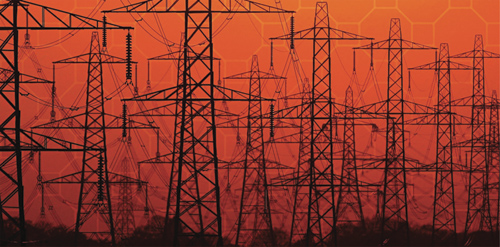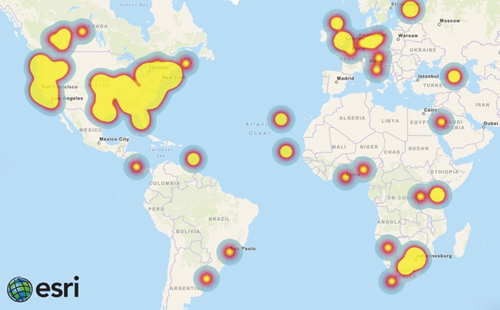Shortly after the release of “The Internet of Things Starts with the Grid of Things Part 3,” the team at DataCapable received a few inquiries about our development philosophies, technology recommendations, and future considerations that any software provider in the utility space should be considering as they begin their interoperability journey.
For those of you who missed Part 1, Part 2, and Part 3, The Internet of Things Starts with the Grid of Things is a tell-all editorial series that’s been documenting the journey of interoperability and the role next generation software plays in the utility industry. Part 1 announced the Grid of Things. It was complemented by Part 2, a step-by-step manual on how to embrace interoperability. Part 3 laid forth the definitions of the individuals responsible; the software developers, product managers, and technical experts.
But as we prepared to dive deep into Part 4 “The Role of Collaboration,” Electric Energy T&D’s readers reminded us that there was more of a story to tell in Part 3. Enter Part 3.5, a much-needed addition to the Grid of Things series.

Image 1 – The Connected Global Grid Vision Is Coming to Life
Part 3.5 – Helping to Build the Connected Global Grid Vision
“La visión de la red conectada necesitará colaboración global. Esto requiere armar un equipo que entienda información que se alinee con las necesidades globales de los consumidores de energía. Como mencionamos en la Parte 3, la ‘tostadora’, en esta serie es intercambiable con cualquier dispositivo en su hogar y es algo que todo el mundo puede relacionar” – Adrian Vallejo, Analyst at DataCapable
There’s a reason why I introduced myself in Spanish. Far too often development teams and business executives forget that the value unlocked from next generation software solutions and associated data has global importance. The entire utility industry is changing fast. Fossil fuels are being replaced with green alternatives. Microgrids, renewables, and batteries are now a common theme at every utility around the world.
The connected global grid vision requires looking far beyond the confines of your office cubicle, a utility service territory, and even the country in which you live. As discussed in Part 3, technology evolution, the power of the cloud and the role of standards are empowering software developers to play an active role in the Grid of Things vision. And while API’s and collaboration are enabling software platforms and companies to do things that never were imagined before, the role of data and its global value is just starting to emerge.
Enter the Analyst and its Role in the Connected Grid Vision
The utility industry has figured out how to gather large amounts of data. This is evident with things like smart meter (AMI) data. Most product and service providers have a clear understanding of how to gather and store big data. The next step is translating this data into value. Enter the Analyst.
The job of the data analyst is to:
- Translate the value of data (more on this later....)
- Understand the roles of business development, sales strategy, and software engineering have in the execution of a new contract
- Be the liaison between a client’s success and their ongoing needs
- Analyze data for new and interesting use cases
- This includes thinking about the global role data has and the value of interoperability
- Understand and create the processes that can be repeated at the next customer with similar use cases
- Update functional and technical findings based on lessons learned
- This includes understanding regional differences in both client management and value translation
- Support the product team on feature requests and general software considerations
The analyst plays a key role in the success at the utility, the software provider, and the unlocking of global value. This requires using the insights gathered from big data and helping the software teams develop functionality that can automate existing inefficient processes at a utility. It also speaks to the value the analyst plays when supporting a variety of markets across the world.
Translating the Value of Data
Recently, I was given the opportunity to support the expansion of software into Latin and South American countries. This global journey is a path many like-minded software providers in the utility industry will embark on in the coming years.
“The terms localization or internationalization typically carry engineering and process oriented connotations. A firm is simply checking the box that their software has been translated for convention, dialect, and other locale-specific considerations. It is so much more than this. All of us need to think strategically about our software’s global role in energy delivery” – Zac Canders, CEO and CoFounder at DataCapable.
Bringing utility software to a new market or region requires looking beyond the physical translation of words. It requires translating the value of data. This speaks directly to the interoperability challenges seen across the planet, and highlighted in Part 2 of the Grid of Things:
- Empower utilities to share their data in real-time with other utilities
- Enable product and service providers to seamlessly access utility data
- Embrace collaboration across the globe
Translating the value of data is one of the key steps in the connected global grid vision. Whether you are a municipality, investor-owned, coop, or government utility, no two are the same. The regulatory landscape, technology adoption challenges, regional differences, language spoken, ownership structure, and even customer expectations create magnitudes of differences. But, across the world, we all share a common element, data.
The Global Outage Tracker is just one example of the value of data:
- A storm in one part of the world can provide a hint of what’s to come in another.
- Recognizing a cyber-security incident in one country can help block a future one someplace else.
- Embracing the process by which data was made available on a global scale, can help drive the unlocking of data sets at the local level.

Image 2 – A Global Outage Tracker Hints at the Connected Grid Vision
The Grid of Things Depends on Collaboration
All of us play an active role in the Grid of Things vision. The connected grid vision will require API’s, collaboration, and a global view on the value of data. The first step in every interoperability journey is getting support from vendors, utilities, customers, regulators, and associated energy stakeholders. As detailed here, the next step is building the team and technologies to execute on those visions. I’d welcome any feedback on this article and encourage everyone to get involved in the Grid of Things. Send me a note at Adrian@datacapable.com As we look to the next installment of the Grid of Things, Part 4 we will explore “The Role of Collaboration,” how we, the industry, are becoming interoperable.
About the Author
 Adrian Vallejo is an analyst at DataCapable. In this role, he is in charge of supporting sales and product teams with “translating the value of data.” Vallejo is a recent graduate of Louisiana State University, where he was actively involved in numerous media analyst activities. He is also supporting DataCapable’s expansion into Latin America, South America, and Spain.
Adrian Vallejo is an analyst at DataCapable. In this role, he is in charge of supporting sales and product teams with “translating the value of data.” Vallejo is a recent graduate of Louisiana State University, where he was actively involved in numerous media analyst activities. He is also supporting DataCapable’s expansion into Latin America, South America, and Spain.






